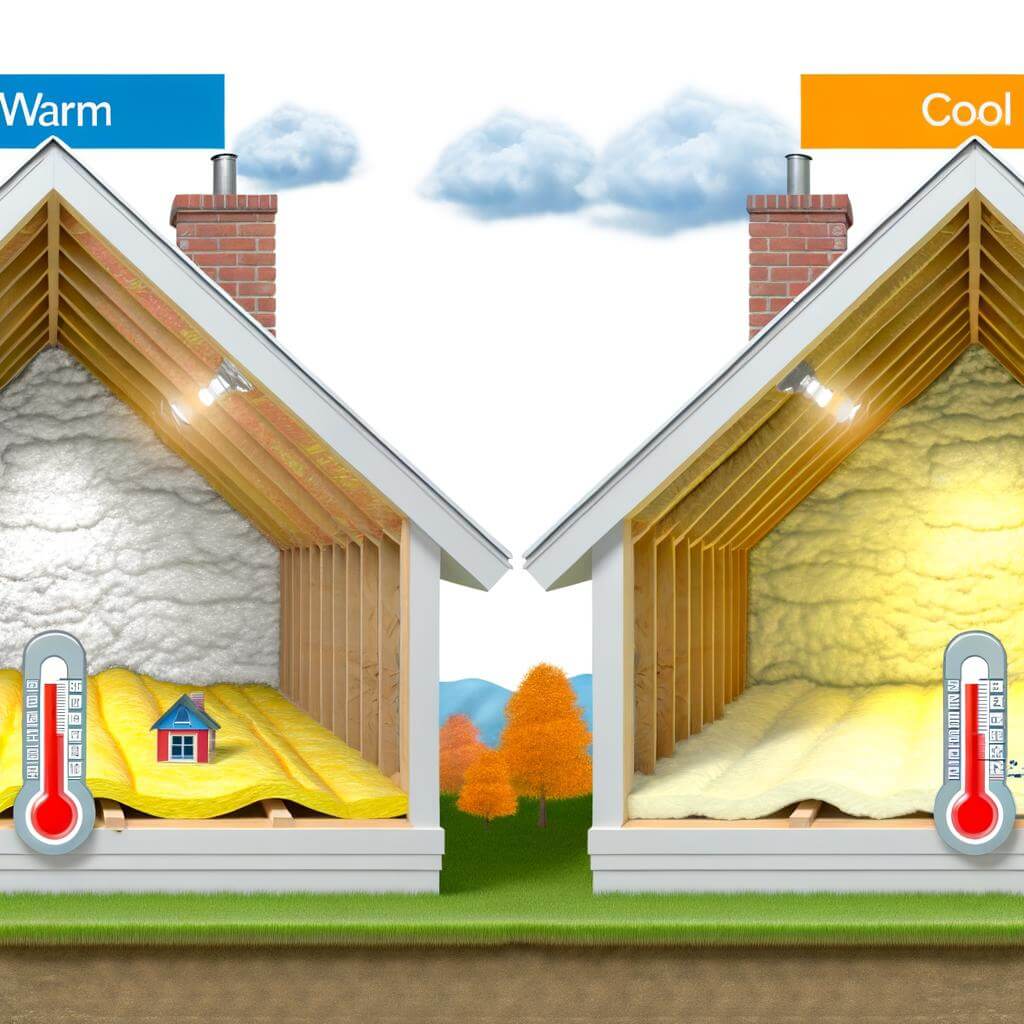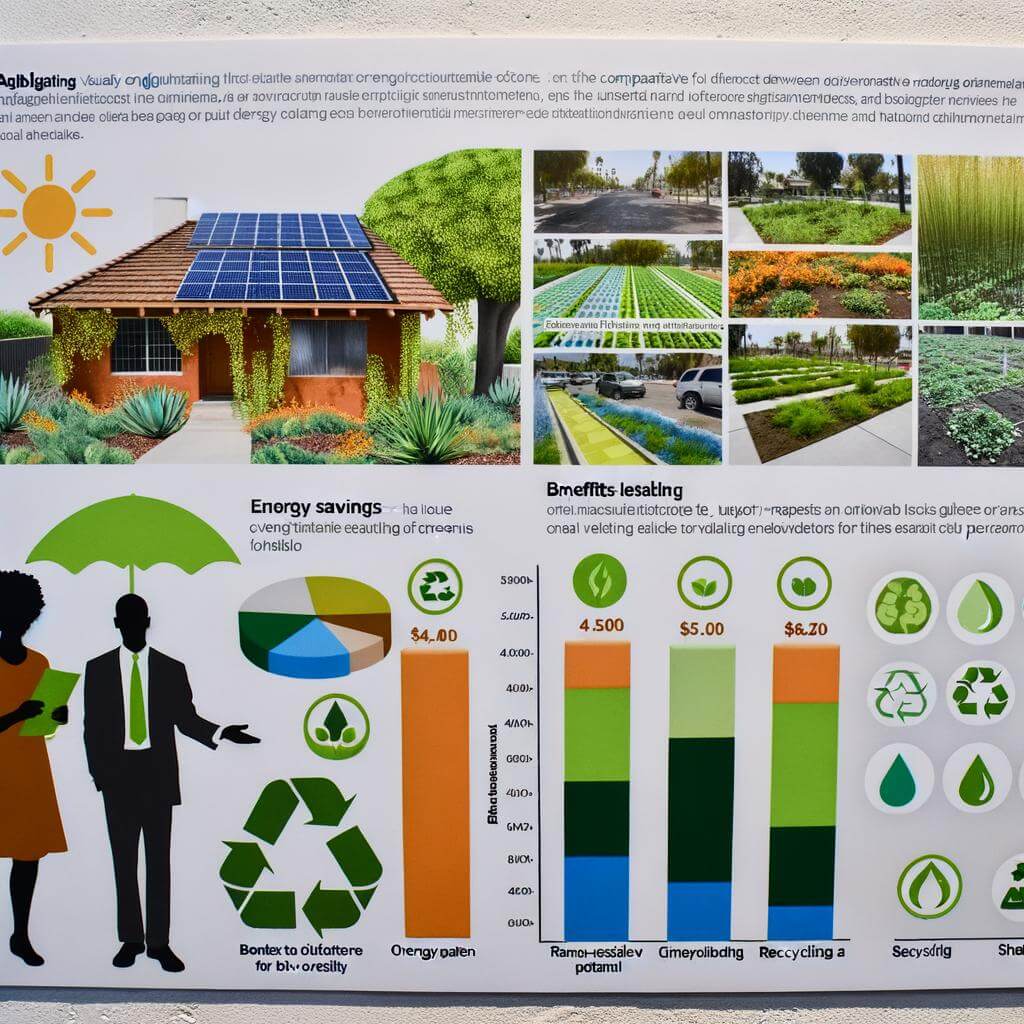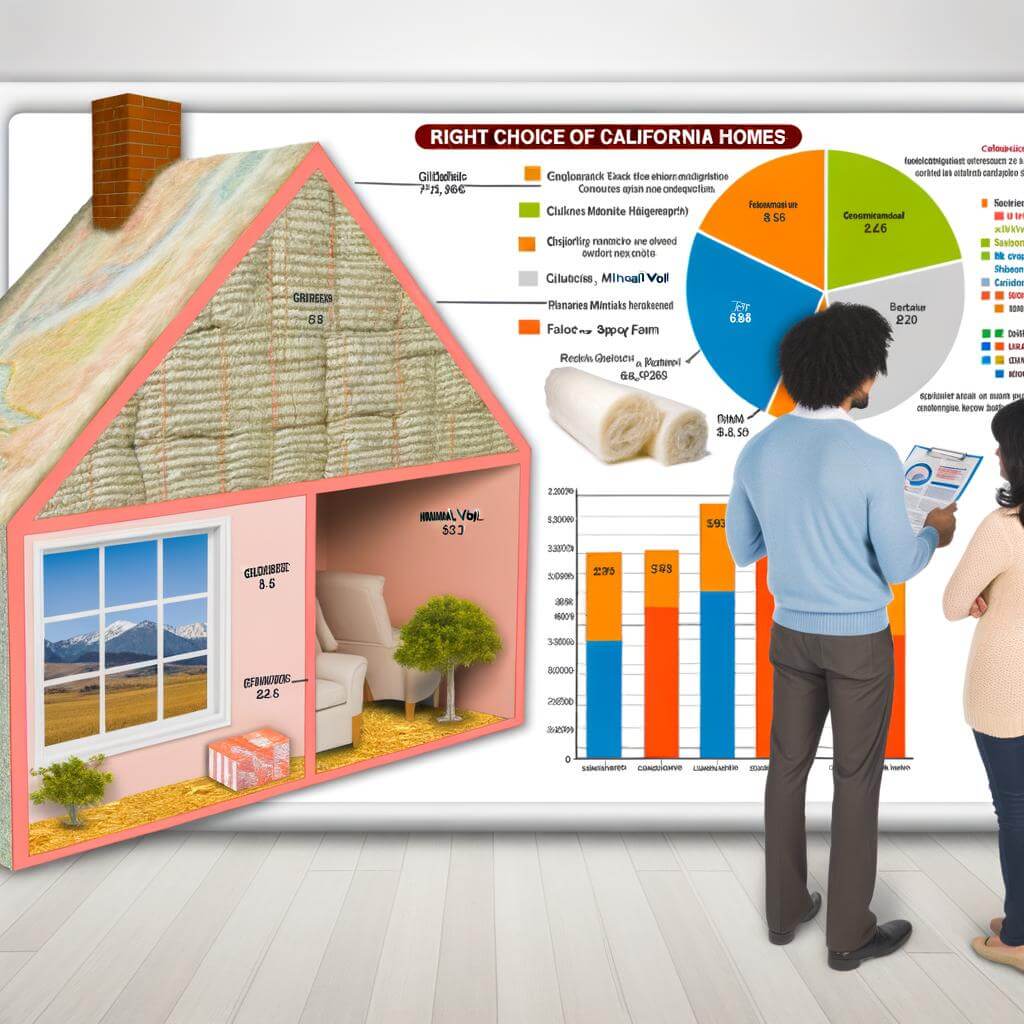As the sweltering heat waves of a California summer give way to the chilly breezes of December, homeowners brace for yet another perennial challenge: maintaining a snug and comfy abode without wreaking havoc on their energy bill. The secret lies not in an extravagant heating system, but right above their heads—in their attic insulation. Two common players in this attic insulation showdown are cellulose and fiberglass, much like the epic duels of Sherlock and Moriarty, or Batman and Joker. In the quest for the optimal attic insulation in the Golden State, which of these stalwarts safeguards your sanctuary best? This comparative analysis carefully dissects the performance, price, eco-friendliness, and installation nuances of both contenders, inching us closer to the answer. Hold on tight as we navigate through the labyrinthine world of attic insulation to find the best protective cloak for your dear dwelling.

Understanding the Basics of Attic Insulation
When it comes to ensuring comfort and energy efficiency in your California home, a well-insulated attic is vital. Two popular materials for great attic insulation are Cellulose and Fiberglass. Each of these materials brings its own set of advantages to the table, and understanding them is the first step towards selecting the best insulation for your attic.
Cellulose is an eco-friendly insulation material, manufactured from recycled paper products. It’s treated with fire-resistant chemicals, making it a safe option for home insulation. On the other hand, Fiberglass, made from fine glass fibers, offers a higher R-value (thermal resistance), which makes it an extremely effective insulation choice. The choice between these two insulation materials often comes down to several key factors.
| CELLULOSE | FIBERGLASS |
| Eco-friendly | High R-value |
| Fire-resistance | Long life span |
| Cost-effective | Moisture resistant |
Your choice might be influenced by factors like cost, the age of your house, the climate in your location, and your personal environmental concerns. Thankfully, regardless of what you choose, both cellulose and fiberglass will reduce your heating and cooling costs by effectively stopping the passage of heat in and out of your home.

Cellulose or Fiberglass: An In-Depth Look
Insulation is a crucial factor when it comes to maintaining a comfortable temperature in your home, particularly in states like California where the climate can vary greatly. The choice between cellulose and fiberglass insulation is one that homeowners often grapple with. Both offer unique benefits and downsides, and the decision ultimately depends on your specific needs, budget, and eco-consciousness.
Primarily, let’s discuss cellulose insulation. Manufactured from recycled paper products, it’s an environmentally friendly option that also offers great insulative properties. The hollow nature of cellulose fibers traps air, thus providing thermal resistance that helps keep your home cool during summers and warm in winters. However, it’s also known to settle over time, which reduces its effectiveness unless topped up regularly.
- Fiberglass, on the other hand, is more affordable and easier to install than cellulose. Made from fine strands of glass, this insulation is non-flammable, which enhances the safety of your home. But, it has a lower R-value, meaning it’s less effective at preventing heat transfer.
| Insulation Type | Environmental Impact | R-Value | Affordability |
|---|---|---|---|
| Cellulose | Low (Made from recycled materials) | High | Can be costly |
| Fiberglass | Higher compared to cellulose | Low | More affordable |
Whitespace In conclusion, both cellulose and fiberglass have their strengths and weaknesses. The task of choosing the optimal attic insulation for your California home lies with weighing out these factors to determine which best suits your needs. Always opt for professional consultation and installation to make the most of your choice.

Optimizing Attic Insulation in California’s Varied Climates
When it comes to attic insulation in California’s ever-changing climatic conditions, two materials come into focus- cellulose and fiberglass. The primary challenge lies in striking the right balance between efficient thermal insulation and effective climatic adaptability. Naturally, the choice of material plays a crucial role in determining an insulation system’s efficacy.
Cellulose Insulation: Made from recycled paper products, cellulose is primarily composed of up to 85% post-consumer waste. It’s densely packed into your attic spaces, creating a virtually seamless blanket of protection. Cellulose is known for its excellent thermal insulation property and its natural resistance against fire, mold, and pests. However, in more humid climates, cellulose may absorb moisture, potentially reducing its insulating efficiency.
Fiberglass Insulation: Fiberglass, made from fine strands of glass, provides a lasting insulation solution. Its prime advantage being the non-absorbent nature which makes it a preferred choice in humid areas. Nonetheless, if installed without a proper vapor barrier, it may hold moisture within, eventually leading to potential mold problems and reduction in insulating efficiency.
| Insulation Type | Fire Resistant | Thermal Efficiency | Moisture Absorption |
| Cellulose | Yes | High | High |
| Fiberglass | No | Medium-High | Low |
In choosing between the two, one should consider the local weather conditions, the desired level of thermal efficiency, and the overall budget. Whether cellulose or fiberglass, a high-quality installation is equally vital to ensure long-lasting, effective insulation.

The Financial Implication: Cost Comparison between Cellulose and Fiberglass
Attic insulation is a key factor in reducing energy cost in your home. The most common types of insulation used today are cellulose and fiberglass. It’s important to note that either choice won’t break your bank but their associated costs, installation and efficiency rate differ. Let’s explore the financial implications of each.
Cellulose insulation is typically cheaper than its counterpart; the fiberglass. Averaging at about $0.75 to $1.25 per square foot for professional installation. On the flip-side, fiberglass insulation costs around $1.50 to $2.00 per square foot for professional installation. Below is a simple illustration of the cost comparison.
| Insulation Type | Cost Per Square Foot |
|---|---|
| Cellulose | $0.75 – $1.25 |
| Fiberglass | $1.50 – $2.00 |
However, focusing solely on the upfront cost would be misleading. The efficiency of the insulation material also plays a role as it influences your long-term energy cost. Studies have shown that cellulose insulation can save you up to 20-30% on heating and cooling costs compared to fiberglass. As such, while initial investment might be relatively smaller for cellulose, fiberglass’s overall cost might edge out in the grand scheme of things.

Environmental Impact: Analyzing Green Options for California Homes
With an aim to reduce carbon footprint and utility costs, many Californian homeowners are revamping their insulation system. Traditional fiberglass and eco-friendly cellulose insulations are two popular choices. But which one offers the best value for money in terms of energy savings, cost-effectiveness and environmental impact? Comparing the thermal resistance – or R-value, a major aspect to consider when choosing insulation, cellulose comes up on top. Its average R-value (per inch) ranges from 3.2-3.8, slightly above the 2.2-2.7 range offered by fiberglass. Given a closer look at their impact on the environment:
- Fiberglass importantly reduces energy consumption, thereby reducing fossil fuel usage and decreasing greenhouse gas emissions. However, its manufacture involves melting sand and other materials at very high temperatures, thus consuming a considerable amount of energy. Roughly 70% of the fiberglass content is recycled glass, which can be viewed as an eco-plus.
- On the other hand, cellulose requires substantially less energy for production. Most importantly, it’s made up of 80-85% recycled newspapers, making it a greener option. Both products have minimal impacts on indoor air quality, if properly installed.
| Parameters | Cellulose | Fiberglass |
|---|---|---|
| R-value per inch | 3.2-3.8 | 2.2-2.7 |
| Production Energy Needed | Less | More |
| Recycled Content | 80-85% | 70% |
In wrapping up, cellulose appears as the more sustainable choice, both in terms of energy efficiency and environmental impact. Yet, one must also factor in the installation cost, local climate, and specific needs of the property before making a final decision.

Making the Right Choice: Tailored Insulation Recommendations for your California Home
California’s diverse climate necessitates that homeowners make informed decisions when it comes to home insulation. But how do you choose between cellulose and fiberglass, the two common types of attic insulation? Ideally, this decision should depend on your specific needs and circumstances. Fortunately, a comparative analysis of these two materials can help shed light on their relative strengths and weaknesses. Let’s first consider cellulose insulation. Made from recycled paper products, cellulose is an eco-friendly choice. It not only insulates well but also serves as an effective sound barrier, making it an all-around top pick for many homeowners. However, avoid using cellulose in humid areas or places prone to moisture as it has a high moisture absorption rate.
| Property | Cellulose Insulation |
| Material | Recycled Paper |
| Eco-friendliness | High |
| Sound Insulation | High |
| Moisture Absorption | High |
On the other hand, fiberglass insulation is another popular and viable choice. It’s made from tiny glass shards spun into a mat-like substance, and it’s resistant to fire and moisture. While it’s less eco-friendly than cellulose, it offers superior durability and resists common pests. However, caution must be exercised during installation due to potential respiratory hazard from minute glass fibers.
| Property | Fiberglass Insulation |
| Material | Spun Glass |
| Eco-friendliness | Medium |
| Sound Insulation | Medium |
| Moisture Absorption | Low |
In conclusion, while cellulose has an edge in eco-friendliness and sound dampening, fiberglass outshines in moisture resistance and durability. Your decision should thus be based on the climate conditions and specific needs of your California home. As our in-depth journey into the world of attic insulation in sunny California reaches its conclusion, it’s clear that both cellulose and fiberglass bear their unique merits and limitations in the battle against heat and cold. This expedition, teetering on the minute fibers of cellulose and the shiny strands of fiberglass, has revealed that the victor in this contest is largely dictated by factors such as personal budget, long-term sustainability plans, and concerns surrounding fire resistance and affordability. As we tilt our hats to the sun, we leave you with the profound understanding that your ultimate choice will hinge on your unique circumstances, personal conviction, and how you want your home to guard you against the shifting character of California’s climate. So, wade through the sea of wisdom depicted through this comparative analysis. Go forth and insulate, fellow Californians, and let your attics stand in defiance against the whims of weather. After all, isn’t it true that every decision we make leaves an imprint not only on our lives, but on our dear planet, too?
